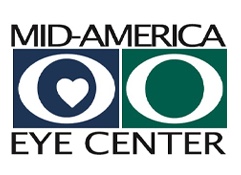Home | Services | Corneal Transplant
Corneal Diseases and Surgery
The cornea is the clear membrane on the front surface of the eye. Light passes through the cornea en route to the retina, where the image of what it viewed is formed for transmission via the optic nerve to the brain. Disease or injury can cause damage to the cornea that prevents light from passing into the eye clearly. This can also be due to scarring or an abnormality in corneal shape.
Several common corneal conditions which limit vision include swelling of the cornea, known as corneal edema, with corneal edema the pump action of the inner layer of the corneal cells (endothelium) is dysfunctional. This is usually due to a progressive disease known as Fuchs’ dystrophy. Corneal swelling can also result from prior intraocular surgery. Infections, most commonly due to bacteria or herpes virus, can cause visually significant cornea scarring. Injuries can result in corneal damage by causing an opacified scar or a significant abnormality in corneal shape. Another common corneal problem is a disease called keratoconus, where the normally spherical shape of the corneal becomes cone-shaped.
Some of the above conditions can be treated with drops to limit cornea swelling or contact lenses to correct for abnormalities in corneal shape. For patients with significant visual limitation not corrected by the above, replacement of the cornea, known as corneal transplantation, is a viable option.
Corneal Transplant
Corneal transplantation, also known as penetrating keratoplasty, is a specialized eye surgery not performed by most eye surgeons. Dr. Unterman specializes in corneal surgery and have completed corneal surgery fellowships. They have performed hundreds of these procedures and have taught other surgeons how to performthem. The procedure usually takes less than an hour and is performed on an outpatient basis using a local anesthetic.
The procedure is performed in an ambulatory surgical center. The Physicians Surgery Center located next door to the Mid-America Eye Center office in Prairie Village is an excellent outpatient facility that specializes in outpatient eye surgeries.
Patients are usually asked to come to the facility approximately forty-five minutes to an hour before the procedure is to start so that they may receive eye drops. Patients are awake during the procedure, but the eye is anesthetized with a local anesthetic, so there is no sensation of pain.
All patients undergoing corneal transplantation are monitored by anesthesia services. The surgeon views the eye through an operating microscope. The central portion of the patient’s diseased cornea is removed with an instrument called a trephine. The donor cornea, which has been obtained from an eye bank prior to the procedure, after having been screened and accepted by the surgeon, is cut with a similar trephine and sewn into place with very small sutures. Some patients may require additional surgery in the eye such as a cataract extraction, and this is done prior to placing the donor cornea. At the end of the procedure antibiotic drops are applied, and a shield is placed over the eye to protect it. This is removed the next day when the patient is seen for a postoperative appointment. During this appointment additional instructions are given, and patients are started on eye drops.
With modern techniques, patients do not have to limit their activity following the procedure and can resume usual daily activities such as driving, lifting and bending over the day after the procedure, although the vision with the operated eye will be blurred while the eye heals. Unlike cataract extraction, after which the vision improves quickly, it takes longer for visual rehabilitation following corneal transplantation. Although corneal transplantation is by far the most successful transplant procedure with over a 95% success rate, there is always the chance of rejection. The signs and symptoms of rejection are discussed with each patient, since most rejections can be reversed with eye drops if treated early. If the donor cornea does not function properly, it can always be replaced with another surgery, although this is only infrequently necessary.
As with any medical procedure there are specific risks and benefits to cataract extraction. After a thorough examination, Dr. Unterman will discuss these issues personally. Once the patient has decided to proceed, specific dates for the surgery are given. When a corneal transplant is scheduled the eye bank is contacted. Unlike in the past, tissue availability is rarely a problem. Appropriate coverage and authorization are obtained by the Mid-America Eye Center Staff.


